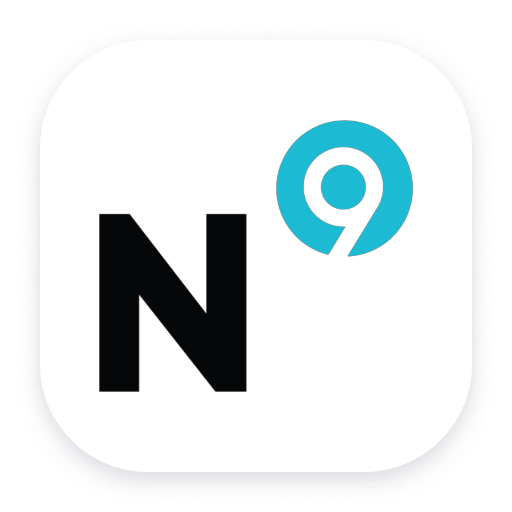
Extend the platform,
empower your team.


- Product information
- Release notes
Overview
With the Extensions Framework 2.0 release of the IBM MQ extension, collect performance metrics from your queue managers running locally on your OneAgent host or remotely from your ActiveGates.
New metadata and metrics are included in this version.
Use cases
- Monitor IBM MQ infrastructure, including Queue Managers, Queues, Channels, Topics, and listeners.
- Get alerted if a Queue Manager recently has started, is not available, has retrying channels, and more.
- Monitor your IBM MQ by deploying locally on a OneAgent monitored-host, or remotely using an ActiveGate.
Compatibility information
Reference the Get Started section for more details on compatibility information.
Extension content
Feature sets
Below is a complete list of the feature sets provided in this version. To ensure a good fit for your needs, individual feature sets can be activated and deactivated by your administrator during configuration.
| Metric name | Metric key | Description | Unit |
|---|---|---|---|
| Inhibit GET | ibmmq.queue.inhibit_get | Whether queue inhibits MQGET | Unspecified |
| Inhibit PUT | ibmmq.queue.inhibit_put | Whether queue inhibits MQPUT | Unspecified |
| Metric name | Metric key | Description | Unit |
|---|---|---|---|
| Oldest message | ibmmq.queue.oldest_message | Age in seconds of the oldest message on the queue. | Second |
| Uncommitted messages | ibmmq.queue.uncommitted_messages | Number of handles opened by applications for output | Count |
| Last GET | ibmmq.queue.last_get | Time at which the last message was successfully read from the queue. | MilliSecond |
| Last PUT | ibmmq.queue.last_put | Time at which the last message was successfully put in queue. | MilliSecond |
| Short time indicator | ibmmq.queue.time_indicator_short | Amount of time that a message spent on the queue over a short period. | MicroSecond |
| Long time indicator | ibmmq.queue.time_indicator_long | Amount of time that a message spent on the queue over a long period. | MicroSecond |
| Metric name | Metric key | Description | Unit |
|---|---|---|---|
| Availability | ibmmq.listener.availability | Percentage this listener was running and available. | Percent |
| Metric name | Metric key | Description | Unit |
|---|---|---|---|
| Last message sent | ibmmq.channel.last_msg | Time when last message was sent, or MQI call was handled | Second |
| Network time short | ibmmq.channel.nettime_short | Amount of time, in microseconds, to send an end of batch request to the remote end of the channel and receive a response over a short period. | MicroSecond |
| Network time long | ibmmq.channel.nettime_long | Amount of time, in microseconds, to send an end of batch request to the remote end of the channel and receive a response over a longer period. | MicroSecond |
| XMIT queue time short | ibmmq.channel.xmitqtime_short | Time, in microseconds, that messages remained on the transmission queue before being retrieved over a short period. | MicroSecond |
| XMIT queue time long | ibmmq.channel.xmitqtime_long | Time, in microseconds, that messages remained on the transmission queue before being retrieved over a longer period. | MicroSecond |
| Metric name | Metric key | Description | Unit |
|---|---|---|---|
| Bytes sent | ibmmq.channel.bytes_sent | Number of bytes sent | Byte |
| Bytes received | ibmmq.channel.bytes_rcvd | Number of bytes received | Byte |
| Buffers sent | ibmmq.channel.buffers_sent | Number of buffers sent. | Count |
| Buffers received | ibmmq.channel.buffers_rcvd | Number of buffers received. | Count |
| Metric name | Metric key | Description | Unit |
|---|---|---|---|
| Total pages | ibmmq.queue_manager.usage.pageset.total_pages | The total number of 4 KB pages in the page set. Available only on z/OS IBM MQ | Count |
| Expand count | ibmmq.queue_manager.usage.pageset.expand_cnt | The number of times the page set has been dynamically expanded since restart. Available only on z/OS IBM MQ | Count |
| Unused pages | ibmmq.queue_manager.usage.pageset.unused_pages | The number of pages that are not used (that is, available page sets). Available only on z/OS IBM MQ | Count |
| Persistent pages | ibmmq.queue_manager.usage.pageset.persistent_data_pages | The number of pages holding persistent data. Available only on z/OS IBM MQ | Count |
| Non-persistent pages | ibmmq.queue_manager.usage.pageset.nonpersistent_data_pages | The number of pages holding nonpersistent data. Available only on z/OS IBM MQ | Count |
| Free buffers | ibmmq.queue_manager.usage.buffer_pool.free_buffers | Number of free buffers in buffer pool. Available only on z/OS IBM MQ | Count |
| Percent of free buffers | ibmmq.queue_manager.usage.buffer_pool.percent_free_buffers | Number of free buffers as a percentage of all buffers in the buffer pool. Available only on z/OS IBM MQ | Percent |
| Total buffers | ibmmq.queue_manager.usage.buffer_pool.total_buffers | The number of buffers defined for specified buffer pool. Available only on z/OS IBM MQ | Count |
| Metric name | Metric key | Description | Unit |
|---|---|---|---|
| Channel instances | ibmmq.channel.instances | Number of instances of this channel. This metric is only available to server-connection channels. | Count |
| Total channel instances used | ibmmq.channel.total_instances_pct | Percentage of instances of this channel over its max intances. This metric is only available to server-connection channels. | Percent |
| Current shared conversations | ibmmq.channel.current_sharing_convs | Number of conversations currently active on this channel instance. This parameter is returned only for TCP/IP server-connection channels. | Count |
| Metric name | Metric key | Description | Unit |
|---|---|---|---|
| Connections | ibmmq.queue_manager.connections | Number of active connections to queue manager | Count |
| Queues count | ibmmq.queue_manager.monitored_queues | Number of monitored queues | Count |
| DLQ depth | ibmmq.queue_manager.dlq_depth | Number of messages in dead letter queue | Count |
| Active channels | ibmmq.queue_manager.active_channels | Number of channels in an active current status | Count |
| Metric name | Metric key | Description | Unit |
|---|---|---|---|
| Inhibit publish | ibmmq.topic.inhibit_pub | Whether publishes are not allowed | Unspecified |
| Inhibit subscription | ibmmq.topic.inhibit_sub | Whether subscriptions are not allowed | Unspecified |
| Metric name | Metric key | Description | Unit |
|---|---|---|---|
| Messages | ibmmq.channel.messages | Number of messages sent or received, or number of MQI calls handled. | Count |
| Batches | ibmmq.channel.batches | Number of completed batches | Count |
| In-doubt messages | ibmmq.channel.current_messages | Number of messages in-doubt | Count |
| Metric name | Metric key | Description | Unit |
|---|---|---|---|
| Long retries left | ibmmq.channel.long_retries_left | Number of long retry attempts remaining | Count |
| Short retries left | ibmmq.channel.short_retries_left | Number of short retry attempts remaining | Count |
| Metric name | Metric key | Description | Unit |
|---|---|---|---|
| Availability | ibmmq.queue_manager.availability | Percentage of time queue manager was reachable and available to this extension. While a queue manager sometimes may be up and running, availability is within the context of this extension. | Percent |
| Uptime | ibmmq.queue_manager.uptime | Time in seconds since last time queue manager started | Second |
| Metric name | Metric key | Description | Unit |
|---|---|---|---|
| Log utilization | ibmmq.queue_manager.log_utilization | Percentage estimate of how well the queue manager workload is contained within the primary log space | Percent |
| Log in use | ibmmq.queue_manager.log_in_use | Percentage of the primary log space in use for restart recovery | Percent |
| Log archive size | ibmmq.queue_manager.log_archive_size | Amount of space occupied, in megabytes, by log extents no longer required for restart or media recovery, but waiting to be archived. | MegaByte |
| Log reuse size | ibmmq.queue_manager.log_reuse_size | Amount of space occupied, in megabytes, by log extents available to be reused. | MegaByte |
| z/OS Total log data sets | ibmmq.queue_manager.total_log_data_sets | The total number of active log data sets. | Count |
| z/OS Full log data sets | ibmmq.queue_manager.full_log_data_sets | The total number of full active log data sets that have not yet been archived. | Count |
| Metric name | Metric key | Description | Unit |
|---|---|---|---|
| Channel status | ibmmq.channel.status | Used to round up channel status counts for alerting and charting purposes | Unspecified |
| Last started time | ibmmq.channel.last_started | Time when this channel was last started | Second |
| Metric name | Metric key | Description | Unit |
|---|---|---|---|
| Depth | ibmmq.queue.depth | Number of messages in queue | Count |
| Depth percentage | ibmmq.queue.depth_percent | Percentage of messages filling up queue | Percent |
| Metric name | Metric key | Description | Unit |
|---|---|---|---|
| Publish count | ibmmq.topic.pub_cnt | The number of applications currently publishing to the topic. | Count |
| Subcription count | ibmmq.topic.sub_cnt | The number of subscribers for this topic string, including durable subscribers who are not currently connected. | Count |
| Metric name | Metric key | Description | Unit |
|---|---|---|---|
| Open input handles | ibmmq.queue.open_input_handles | Number of handles opened by applications for input | Count |
| Open output handles | ibmmq.queue.open_output_handles | Number of handles opened by applications for output | Count |
| Metric name | Metric key | Description | Unit |
|---|---|---|---|
| Enqueue count | ibmmq.queue.enqueue_cnt | Number of messages enqueued. This count includes messages that have been put to the queue, but have not yet been committed. Enqueue rate also comes with this metric. | Count |
| Dequeue count | ibmmq.queue.dequeue_cnt | Number of messages dequeued. This count includes messages that have been successfully retrieved (with a nonbrowse MQGET) from the queue, even though the MQGET has not yet been committed. Dequeue rate also comes with this metric. | Count |
| Metric name | Metric key | Description | Unit |
|---|---|---|---|
| In-doubt | ibmmq.channel.in_doubt | Whether the channel is currently in doubt. 0 = No. 1 = Yes | Unspecified |
Full version history
Full version history
⚠️ Important Change:
- This version requires a Minimum Dynatrace Version and Minimum ActiveGate version of 1.314.0 or higher.
New in this version:
- Added ALERT_TEMPLATES for anomaly detectors in the Davis Anomaly Detection app (latest Dynatrace only).
Improved in this version:
- Internal metadata updated.
- Updated the layout of dashboard (latest Dynatrace only).
- Fixed a bug with the
ibmmq.channel.total_instances_pctmetric that was defaulting to 100%.
Full version history
⚠️ Important Change:
- Minimum EEC version requirement was increased to 1.313.0
What's new:
- Added support to auto-defined cluster sender channels
- Added Endpoint status roll up to monitoring configuration.
Fixed in this version:
- Resolved an issue where channel instances metric was incorrect.
- Resolved an issue where Dead Letter Queue access was too broad on z/OS.
Full version history
Fixed in this version:
- Fixed issue when channel auto-definition was enabled and extension would stop monitoring.
Full version history
⚠️ IMPORTANT ⚠️
- Minimum EEC version and Dynatrace version were increased to 1.313
New in this version:
- Added
enablePCFResponseExpiryJVM parameter to work around IBM MQ (APAR IT11161) issue that could leave messages orphaned in Reply queues. - Added auto-defined channel support.
- Added support for OpenShift routing using Outbound SNI
- Added Last start time metric to channels.
- Added error codes to facilitate troubleshooting.
- Added more situations that could indicate Queue Manager is not reachable from extension.
Fixed in this version:
- Resolved issue where logs were not showing for local deployment
- Resolved performance issue when collecting channels using bulk mode.
Full version history
Issues resolved in this version:
- An issue where ActiveChannels and Channels would not display or show any data.
- An issue where Total Channels Percentage metric was not correct.
- An issue where extension would not start on custom installations where there would be a mix of config folders across multiple locations.
Features in this version:
- New generation dashboard has been added.
Full version history
⚠️IMPORTANT CHANGE⚠️
This extension version requires minimum Dynatrace cluster version 1.310.
In this version:
- New dashboard compatible with new Dynatrace look & feel.
Full version history
Issues resolved in this version:
- Resolved issue where Active Channels metric was not showing on Remote version.
- Resolved issue where Channel metrics could spike up when going into Retrying mode on certain MQ use cases.
- Resolved issue where Topology could not be sent to Dynatrace API on newer ActiveGate versions.
Full version history
Fixed in this version:
- Issue where broken connections would not auto-reconnect.
- Issue with reading local configuration on OneAgent (Local) deployment.
- High/Low Queue Depth Limit dimension is sent every minute to allow for metric events to work properly.
New metric:
- Total Channel Instances Percent
Full version history
Release notes:
⚠️ When migrating from any version below 3.5.x, please read 3.5.2 Release Notes
Changes in this version:
- Short/Long retries channel metric adjustment.
- Disable auto-alerting feature was added.
- Task bucket size feature was added to optimize resource utilization across ActiveGates.
- Fixed issue with a gap occurring once an hour for certain dimensions on channels.
Full version history
⚠️ When migrating from any version below 3.5.x, please read 3.5.2 Release Notes
Changes in this version:
- Minor filters fix
Full version history
⚠️IMPORTANT CHANGE⚠️
This version takes filtering rules and evaluates them in sequential order. This allows you to enter more complex filtering rules based on results from the previous step.
For example:
- Monitor all queues
- Do not monitor queues that start with SYSTEM.
- Monitor queues that start with SYSTEM.CLUSTER.
- Do not monitor queues that start with SYSTEM.CLUSTER.TRANSMIT.
will evaluate them in that specific order.
Same as:
*, -SYSTEM*, SYSTEM.CLUSTER*, -SYSTEM.CLUSTER.TRANSMIT.*
-
Make sure you review your rules when upgrading to this version to ensure they are ordered in the sequence you want to evaluate them
-
In case you need to change the order, there is no need to recreate rules. You can drag & drop them using your mouse over the dots next to each rule.
Other changes:
actual_qm_nameproperty is in all entities.- Resolved "No KeepAlive from datasource Python" message in some specific instances that was causing restarts.
- Resolved issue with channel metrics on z/OS that were not aggregating properly.
Full version history
- Resolved java error on ConcurrentModification exception
Full version history
- Resolved issue with channels showing incremental values.
- Some large numbers display as negative.
Full version history
Note: All patches are cumulative. For a list of fixes and enhancements, please look at Release notes in previous releases.
In this release:
- Resolved an issue on Windows Local deployments only where it could not find MQ libraries.
Full version history
- Fixed an issue on z/OS and channel metrics coming in once an hour.
- Fixed an issue where some dimensions regarding QSG were missing.
- Fixed an issue where topology was not being sent.
- Minor bug fixes
Full version history
- Fixed issue that caused gaps in metrics.
- Modified data collection to no longer require permissions to all objects but still optional when collecting data in bulk.
- Added functionality to send a log event when multi-instanced queue manager switch hosts (failover). This allows the creation of alerting when failover occurs.
- Minor improvements and bug fixes
Full version history
- Resolves a java error dependency on java.time.Instant#seconds
Full version history
- Credential Vault support was added.
- Ability to Rename/Prefix queue managers allowing you to have same queue manager names from different environments or datacenters.
- Minor fixes.
Full version history
- Improved memory consumption.
- Added Connection name list and Connected host properties to MQ objects (Remote deployment only).
- Fixed non-ascii characters in description fields causing rejection.
- Fixed issue causing extension initialization problems on some rare use cases.
- Fixed an issue with filters no picking up new channels.
Full version history
- Solved an issue with connections that gave a MQRC_QMGR_NAME_ERROR error
Full version history
- Solved a communication error with cluster when sending Topology data.
- Added Management zone support to metrics.
- Added type of activation, configuration labels and description to Queue manager metadata for rapid configuration lookup.
- Various UI fixes
Full version history
- ⚠️ For customers upgrading from versions 3.0.x, new entities will be created for all objects (queue managers, queues, channels, topics, listeners). You will see double entities temporarily, and it will fix itself over time. Your old entities will eventually fall off. Please update any references to any existing entities in any custom alert rules or any custom dashboards you may have created. This change does not affect customers coming from 1.x.x or 2.x.x versions. Please disregard this warning if you are not upgrading from 3.0.x.
- Added support to Remote (ActiveGate) deployment, therefore consolidating activations.
- Added Remote queues
- Made adjustments to Unified Analysis screens to reflect new metrics and deployment.
- Support for z/OS and AIX on Remote deployment only.
- Fixed issue with circular dependencies in libraries.


